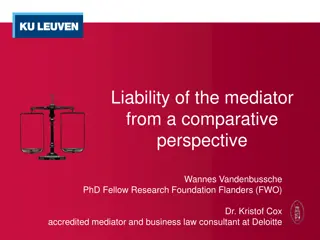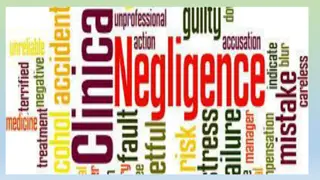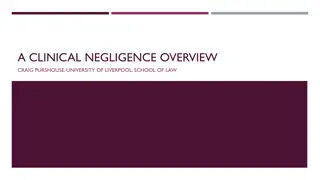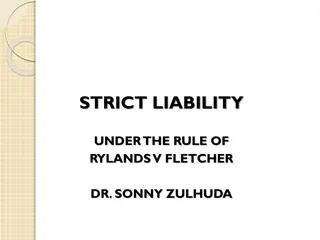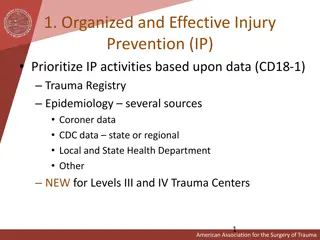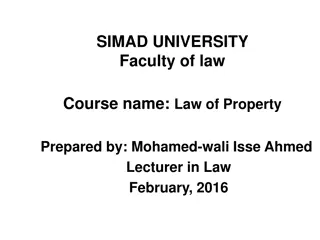Liability in Negligence for Injury to People and Property
The case of Donoghue v. Stevenson in 1932 established the tort of negligence, highlighting the duty of care owed by manufacturers to consumers. The House of Lords' decision emphasized the existence of a legal duty of care beyond contractual relationships, introducing the neighbor principle. Lord Atkin's iconic statement regarding taking reasonable care to avoid foreseeable harm to one's neighbors remains a cornerstone in negligence law.
Download Presentation

Please find below an Image/Link to download the presentation.
The content on the website is provided AS IS for your information and personal use only. It may not be sold, licensed, or shared on other websites without obtaining consent from the author. Download presentation by click this link. If you encounter any issues during the download, it is possible that the publisher has removed the file from their server.
E N D
Presentation Transcript
Liability in negligence for injury to people and damage to property Negligence: The Duty of Care
Lesson Objectives By the end of the session you should be able to: 1. Describe the facts of Donoghue v Stevenson [1932] 2. Explain the neighbour principle. 3. Describe the facts of CaparoIndustries plc v Dickman [1990]. 4. Explain the redefining of the neighbour principle in Caparo.
Donoghue v Stevenson [1932]: The Facts The tort of negligence was established in the case of Donoghue v Stevenson. Mrs Donoghue was in a cafe in Paisley in Scotland. She was drinking ginger beer from an opaque bottle that had been bought for her by her friend. When her glass was topped up, the remains of a decomposed snail fell from the bottle. The shock of the snail, together with the thought of what she had already drunk led Mrs Donoghue to suffer shock and severe gastroenteritis.
Donoghue v Stevenson [1932]: Some Difficulties Did Mrs Donoghue have a legal relationship with the cafe owner? [Remember that Mrs Donoghue s friend bought the ginger beer.] Did Mrs Donoghue have a legal relationship with the manufacturer?
Donoghue v Stevenson [1932]: The House of Lords Decision The House of Lords decided that by a majority of 3 to 2 that a legal duty of care could be owed by a manufacturer to a consumer even though no contractual duty existed. The three judges who supported this establishment of a legal duty of care outside of a contractual relationship were Lord Atkin, Lord Macmillan and Lord Thankerton. All three judges concentrated on the duty owed by a manufacturer to a consumer in their judgments.
Donoghue v Stevenson [1932]: The House of Lords Decision The judgements of Lord Atkin and Lord Macmillan suggested that the legal duty of care could exist beyond that owed by a manufacturer to a consumer. Lord Atkin stated that there was a neighbour principle which imposes a universal duty to take care. Lord Macmillan stated that [t]he categories of negligence are never closed .
Lord Atkin in Donoghue and Stevenson [1932] You must take reasonable care to avoid acts or omissions which you can reasonably foresee would be likely to injure your neighbour. Who, then, in law is my neighbour? The answer seems to be persons who are so closely and directly affected by my act that I ought reasonably to have them in my contemplation as being so affected when I am directing my mind to the acts or omissions which arecalled inquestion. http://www.bailii.org/uk/cases/UKHL/1932/100.html
Lord Macmillan in Donoghue and Stevenson [1932] The criterion of judgment must adjust and adapt itself to the changing circumstances of life. The categories of negligence are never closed. The cardinal principle of liability is that the party complained of should owe to the party complaining a duty to take care, and that the party complaining should be able to prove that he has suffered damage in consequence of a breach of that duty. http://www.bailii.org/uk/cases/UKHL/1932/100.html
Donoghue and Stevenson [1932]: the Aftermath Having decided that a legal duty of care could be owed, the House of Lords sent the case back to the Scottish Court of Session to be tried on the facts of the case using the duty of care principles. However, the trial never took place because Stevenson died. Mrs Donoghue was paid a sum of money in an out of court settlement by Stevenson s estate. The exact sum paid is disputed but generally believed to be in the area of 200.
Donoghue and Stevenson [1932]: Further Reading Select one of the following free online resources to find out more about the case (and Mrs Donoghue herself!). Incorporated Council of Law Reporting http://www.iclr.co.uk/learning-zone/training-materials/the-snail-and-the-ginger-beer/ Scottish Council of Law Reporting http://www.scottishlawreports.org.uk/resources/dvs/mrs-donoghue-journey.html
Activity Use a textbook or multimedia device to research the following two cases. Hedley Byrne & Co Ltd v Heller & Partners Ltd [1963] http://www.bailii.org/uk/cases/UKHL/1963/4.html Home Office v Dorset Yacht Co Ltd [1970] http://www.bailii.org/uk/cases/UKHL/1970/2.html
Caparo Industries PLC v Dickman [1990]: The Facts CaparoIndustries plc wanted to take over another company called Fidelity plc and started buying the shares of the company. It was known that Fidelity was not doing well. In 1984 Fidelity s annual accounts were done with the help of their auditor (Dickman) and issued to the shareholders. Once Caparo took over Fidelity, it was found that Fidelity was in a worse state than had been revealed by the annual accounts. It sued the auditors for negligence in preparing the accounts. Caparosought the difference in value between what the company was actually worth and what the accounts suggested it was worth.
Caparo Industries PLC v Dickman [1990]: Was a Duty of Care Owed? The case was based on the extent to which one party was liable for the damage caused to another party by a negligent misstatement. The Court of Appeal held that the auditor owed shareholders, one of which was Caparo, a duty of care which it had breached when it made its negligent misstatement with the publishing of the accounts. However, the House of Lords held that there was no duty of care owed by the auditor to shareholders such as Caparo.
Caparo Industries PLC v Dickman [1990]: Lord Bridge Lord Bridge argued: the interest of the shareholders in the proper management of the company's affairs is indistinguishable from the interest of the company itself and any loss suffered by the shareholders, e.g. by the negligent failure of the auditor to discover and expose a misappropriation of funds by a director of the company, will be recouped by a claim against the auditors in the name of the company, not by individual shareholders. http://www.bailii.org/uk/cases/UKHL/1990/2.html
Caparo Industries PLC v Dickman [1990]: Lord Roskill Lord Roskill argued: The submission that there is a virtually unlimited and unrestricted duty of care in relation to the performance of an auditor's statutory duty to certify a company's accounts, a duty extending to anyone who may use those accounts for any purpose such as investing in the company or lending the company money, seems to me untenable. http://www.bailii.org/uk/cases/UKHL/1990/2.html
Caparo Industries PLC v Dickman [1990]: the Basis of the Decision The decision of the House of Lords was based on the fact that there was not sufficient proximity in the relationship between the auditor and the shareholders such as Caparo. This means that the duty of care was owed to Fidelity rather than its shareholders. It was also established that any duty of care must be fair, just and reasonable. If the duty of care owed for the misstatements was extended to include third parties such as shareholders then liability would be owed to an almost limitless number of persons.
Caparo Industries PLC v Dickman [1990]: Three-Part Test The case established a three-part test for establishing a duty of care: 1. Harm must be reasonably foreseeable as a result of the defendant's conduct. 2. The parties must be in a relationship of proximity, and 3. It must be fair, just and reasonable to impose liability.
Caparo Industries PLC v Dickman [1990]: Lord Bridge Lord Bridge: What emerges is that, in addition to the foreseeability of damage, necessary ingredients in any situation giving rise to a duty of care are that there should exist between the party owing the duty and the party to whom it is owed a relationship characterised by the law as one of proximity or neighbourhood and that the situation should be one in which the court considers it fair, just and reasonable that the law should impose a duty of a given scope upon the one party for the benefit of the other. http://www.bailii.org/uk/cases/UKHL/1990/2.html
CaparoIndustries PLC v Dickman [1990]: Future Developments Lord Bridge also suggested that the law of the duty of care should develop on an incremental basis as new situations arise rather than assume it exists in all situations. Use a textbook or multimedia device to research how duty of care was extended in the following case: Bharma v Dubb[2010] http://www.bailii.org/cgi-bin/format.cgi?doc=/ew/cases/EWCA/Civ/2010/13.html&query=(bhamra)


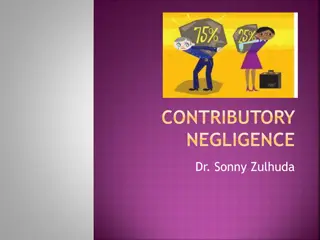

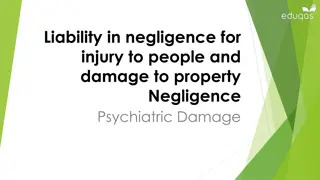
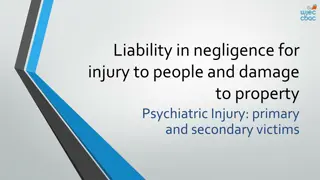


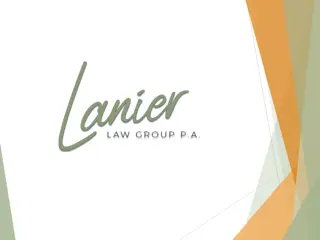
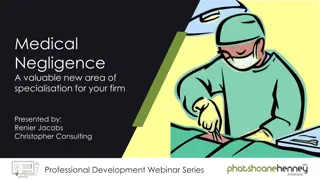
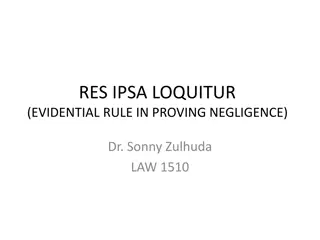
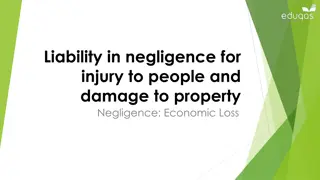
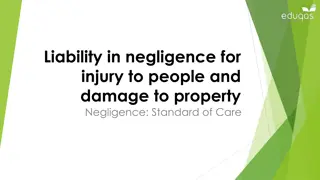
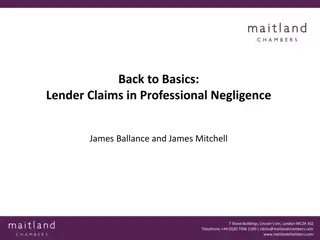

![Understanding Negligence Liability in Donoghue v. Stevenson [1932]](/thumb/198881/understanding-negligence-liability-in-donoghue-v-stevenson-1932.jpg)

